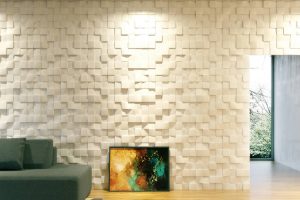Discover the Intricate World of Plaster Wall Design

Importance of Plaster Wall Design
When it comes to home aesthetics, plaster wall design is often overlooked, yet it plays a crucial role in defining the character of a space. Elevating the look of walls through well-executed plastering can create an ambiance that resonates with personal style and sophistication. By incorporating plaster walls, homeowners not only enhance the visual appeal but also gain the functional benefits of durability and insulation. Reasons Why Plaster Wall Design Matters:
- Discover the Intricate World of Plaster Wall Design
- Importance of Plaster Wall Design
- History of Plaster Walls
- Origins of Plaster Use
- Types of Plaster Materials
- Lime Plaster
- Gypsum Plaster
- Techniques for Applying Plaster
- Troweling
- Polishing
- Different Styles of Plaster Wall Design
- Venetian Plaster
- Stucco
- Contemporary Trends in Plaster Wall Design
- Minimalist Approach
- Textured Finishes
- Maintenance and Care for Plaster Walls
- Cleaning Tips
- DIY Plaster Wall Design Projects
- Faux Finish Techniques
- Stencil Designs
- Hiring a Professional for Plaster Wall Projects
- Conclusion
- Visual Appeal: Plaster finishes can range from sleek and modern to rustic and textured, allowing for versatile aesthetics.
- Durability: Well-applied plaster can withstand the test of time, providing a long-lasting surface that resists wear and tear.
- Insulation: Plaster can help regulate indoor temperatures, contributing to a more comfortable living environment.
Having experienced the transformation firsthand, a friend’s recent renovation revealed how plaster walls can seamlessly blend elegance with functionality. This only affirms that investing in plaster wall design is a choice worth considering for any homeowner.
History of Plaster Walls
Origins of Plaster Use
Plaster has been an essential building material for thousands of years, tracing its origins back to ancient civilizations. The use of plaster can be seen in the grand structures of Mesopotamia and ancient Egypt, where craftsmen applied lime-based plaster to not only beautify but also protect buildings. Imagine stepping into a temple adorned with vibrant walls, testament to the skill of artisans from long ago. Key Historical Milestones in Plaster Use:
- Ancient Egypt (c. 3000 BC): Used plaster for decorative purposes, covering mud walls with vibrant murals.
- Greek and Roman Architects: Employed plaster in grand architectural designs, often used in dome ceilings and intricate moldings.
- Middle Ages: Plaster became a staple in Gothic cathedrals, showcasing elaborate designs that still inspire awe today.
Reflecting on a historical tour, the guide shared that the remnants of ancient plaster techniques can be found in modern homes, highlighting its enduring legacy. Through the ages, plaster walls have seamlessly melded artistry and utility, setting the stage for their evolution in contemporary design.
Types of Plaster Materials
Lime Plaster
Lime plaster is one of the oldest and most sustainable plaster materials, revered for its versatility and breathability. Made from pure lime mixed with sand and water, lime plaster not only adheres well to various surfaces but also allows moisture to escape, reducing the risk of mold growth. I recall my recent visit to a historic building where lime plaster was used; it not only added a rustic charm but also maintained a healthy indoor environment. Benefits of Lime Plaster:
- Eco-Friendly: Non-toxic and often made from natural materials.
- Breathability: Ideal for older homes, allowing walls to “breathe.”
- Flexibility: Can accommodate slight movements in buildings without cracking.
Gypsum Plaster
On the other hand, gypsum plaster, also known as plaster of Paris, offers a quick-set alternative that has become popular in modern construction. Its fine finish and compatibility with various textures make it a go-to for interior designs. During my brother’s recent renovation, they opted for gypsum plaster to achieve a smooth, modern look—truly a game-changer in their space! Advantages of Gypsum Plaster:
- Fast Setting Time: Great for time-sensitive projects as it dries quickly.
- Smooth Finish: Provides a sleek surface perfect for painting or wallpapering.
- Fire Resistant: Adds an extra layer of safety to a building.
Understanding these plaster materials not only helps homeowners make informed choices but also allows them to appreciate the craftsmanship involved in creating beautiful plaster walls.
Techniques for Applying Plaster
Troweling
When it comes to applying plaster, the troweling technique is essential for achieving a smooth and even finish. This method involves using a flat tool to spread and shape the plaster onto the wall, ensuring an expertly crafted surface. I remember watching an old friend, a professional plasterer, as he skillfully troweled his way across a new wall, transforming it into a flawless canvas. His technique involved a rhythmic motion that looked almost effortless. Key Steps in Troweling:
- Preparation: Ensure the wall surface is clean and damp to enhance adhesion.
- Application: Use a hawk to hold plaster and apply it to the trowel. Spread it evenly in sweeping motions.
- Finishing Touch: A gentle pass with the trowel gives the surface a pristine look.
Polishing
On the flip side, polishing is another vital technique that elevates the appearance of plaster walls. After the plaster has set partially, polishing brings out subtle textures and can create luxurious finishes akin to marble. I recall attending a workshop where artisans demonstrated polishing; the transformation was breathtaking as the dull surface turned radiant with each stroke. Benefits of Polishing:
- Enhanced Aesthetic Appeal: Creates a stunning, glossy finish that reflects light elegantly.
- Durability: Polished surfaces are often more resistant to dirt and require less maintenance.
- Customizability: Different polishing techniques can yield varied textures and finishes.
Understanding these techniques is crucial for anyone looking to create beautiful plaster walls. Whether through troweling or polishing, mastery of these methods opens a world of design possibilities.
Different Styles of Plaster Wall Design
Venetian Plaster
Venetian plaster is a timeless art form, known for its elegant, marble-like finish that adds sophistication to any space. This technique involves layering and burnishing, which creates depth and sheen that can transform a plain wall into a statement piece. I remember visiting a friend’s newly renovated home, where every room featured lush Venetian plaster, making the whole atmosphere feel luxurious. It was as if the walls themselves whispered tales of Italian opulence. Characteristics of Venetian Plaster:
- Multi-Layered Finish: Achieved through several thin applications, offering a rich texture.
- Customization: Available in various colors and sheens, making it versatile for different tastes.
- Durability: Highly resistant to cracking and provides excellent longevity.
Stucco
In contrast, stucco is a more rugged and textured plaster style that evokes a rustic charm. Widely used for exteriors, stucco brings an earthy, Mediterranean feel to homes. I often think back to my childhood neighborhood adorned with stucco facades, which provided a warm and inviting atmosphere. Advantages of Stucco:
- Weather-Resistant: Ideal for various climates, protecting homes from the elements.
- Versatility: Can be applied in different textures (smooth, rough, or patterned) to suit individual preferences.
- Cost-Effective: Often more affordable than other plaster types, especially for larger applications.
Both Venetian plaster and stucco represent distinct styles within plaster wall design, allowing homeowners to express their unique personalities while enhancing their living spaces. Whether one leans towards elegant sophistication or rustic charm, there’s a plaster style for everyone.
Contemporary Trends in Plaster Wall Design
Minimalist Approach
In today’s design landscape, a minimalist approach to plaster wall design is gaining significant popularity. This trend emphasizes simplicity and clean lines, making spaces feel open and airy. I remember helping a friend decorate their new apartment; we decided to go with a soft white lime plaster finish that beautifully reflected light and made their compact space feel larger. The result was stunning yet understated, perfectly aligning with minimalist principles. Key Features of the Minimalist Approach:
- Neutral Color Palettes: Whites, grays, and earth tones dominate, enhancing a sense of calm.
- Simple Textures: Smooth finishes that eliminate excessive detailing keep the focus on space rather than embellishments.
- Functional Spaces: Every plaster wall serves a purpose, emphasizing utility without sacrificing elegance.
Textured Finishes
On the other hand, textured finishes are making a comeback, adding visual interest and depth to modern interiors. These finishes, whether achieved through techniques like stucco or troweling, allow homeowners to showcase individuality and creativity. I once visited an art studio with textured walls that featured vibrant colors and patterns, sparking inspiration at every turn. Benefits of Textured Finishes:
- Dynamic Visual Appeal: Adds layers to interiors, making walls a focal point.
- Conceals Imperfections: Textures can distract from minor flaws in the wall surface.
- Personal Expression: Customizable textures allow homeowners to convey their unique style.
Embracing these contemporary trends in plaster wall design provides endless possibilities for creating beautiful, personalized spaces. Whether through minimalism or textured finishes, there’s a style to suit every taste.
Maintenance and Care for Plaster Walls
Cleaning Tips
Maintaining plaster walls requires a delicate touch, but with a few easy steps, you can keep them looking fresh and beautiful. After my cousin moved into a charming old house adorned with plaster walls, I learned valuable lessons about their care through her exploration. To my surprise, cleaning plaster walls isn’t as daunting as it sounds! Essential Cleaning Tips:
- Gentle Dusting: Use a soft cloth or a duster to remove dust and cobwebs gently. Avoid harsh scrubbing to prevent damage.
- Spot Cleaning Stains: For minor stains, mix warm water with a few drops of mild dish soap. Apply the solution gently with a soft sponge and blot, avoiding excessive moisture.
- Avoiding Abrasives: Steer clear of abrasive cleaners or scrubbing pads, as these can scratch the surface and ruin the finish.
After implementing these tips in her home, my cousin was amazed at the difference it made. Regular maintenance not only minimizes wear and tear but also enhances the beauty of plaster walls, ensuring they remain a stunning feature of any room. With just a little effort, you can enjoy the elegance of plaster for years to come.
DIY Plaster Wall Design Projects
Faux Finish Techniques
If you’re feeling adventurous and creative, DIY plaster wall projects can be both rewarding and fun! One of the most popular methods is faux finishing, where you can create the illusion of high-end materials like marble or traditional Venetian plaster without a hefty price tag. I remember the time I worked on a living room makeover with faux finishes; the transformation was jaw-dropping! Steps for Achieving a Faux Finish:
- Choose Your Base Color: Start with a solid color as your base coat.
- Mix Your Faux Effects: Use a combination of paints, glazes, and tools like sponge rollers or ragging techniques to create the desired effect.
- Layering: Apply multiple layers, allowing each to dry before adding the next to achieve depth.
Stencil Designs
Another fun DIY project is using stencils to add intricate patterns or designs to your plaster walls. This technique allows for personal expression and can elevate any room. I once helped a friend stencil a playful design in their child’s room, and it added a whimsical touch that lit up the space. Tips for Stenciling Success:
- Select Your Stencil: Choose a design that complements your decor style.
- Apply the Stencil: Secure it to the wall and use a brush or sponge to dab paint over the cutouts.
- Finishing Touches: Carefully peel off the stencil, and allow the design to dry completely.
These DIY plaster wall projects—whether opting for faux finishes or stenciling—can help you infuse your personality into your home while enjoying the creative process. With a little patience and passion, beautiful plaster walls are well within reach!
Hiring a Professional for Plaster Wall Projects
While DIY plaster wall projects can be an enjoyable way to personalize your space, there are situations where hiring a professional is the best route to take. I once attempted a plastering project on my own, thinking it would be a simple task, only to realize I was in over my head. The uneven finish was a stark reminder that some jobs are best left to the experts. Reasons to Consider a Professional:
- Expertise and Experience: Professionals bring years of practice and knowledge, ensuring high-quality results without common pitfalls.
- Time-Saving: Hiring an expert allows you to focus on other important aspects of your project while they efficiently complete the work.
- Access to Specialized Tools: Professionals have the right equipment and materials necessary for flawless application.
When my neighbor decided to renovate his living room with Venetian plaster, he opted for a professional service. The outcome was stunning, and he felt it was worth every penny. Investing in a professional for plastering not only guarantees stunning results but also ensures that your home receives the care and attention it deserves.
Conclusion
As we’ve explored throughout this article, plaster wall design offers a world of possibilities, whether you choose to embrace DIY techniques or hire a professional. From the history of plaster walls to contemporary trends, the journey of utilizing plaster in our homes is both rich and rewarding. I fondly recall my own experiences transforming spaces with plaster, marveling at how it can enhance the character of a room. Key Takeaways:
- Versatile Options: With styles like Venetian plaster and stucco, there’s a perfect choice for every aesthetic.
- Maintenance Matters: Proper care and cleaning can extend the life and beauty of your plaster walls.
- Seek Help When Needed: Upholding the quality of your investments often means recognizing when to call in an expert.
Ultimately, whether you’re embarking on a DIY project or seeking out professional help, the right plaster walls can turn your vision into reality—creating environments that inspire and resonate. Embrace the beauty of plaster, and watch your space transform!




